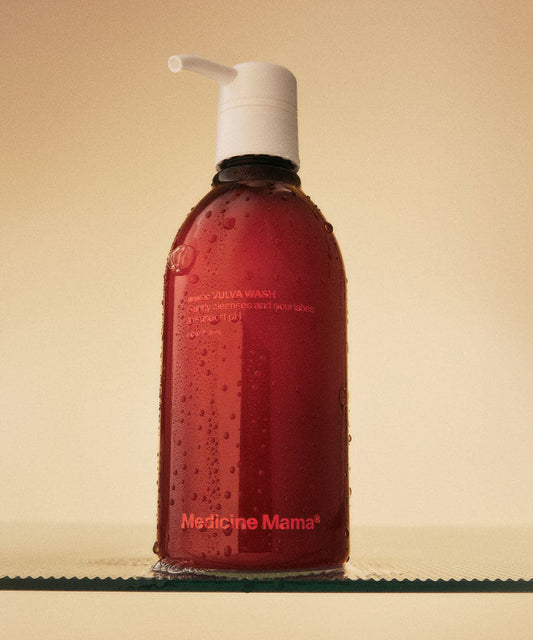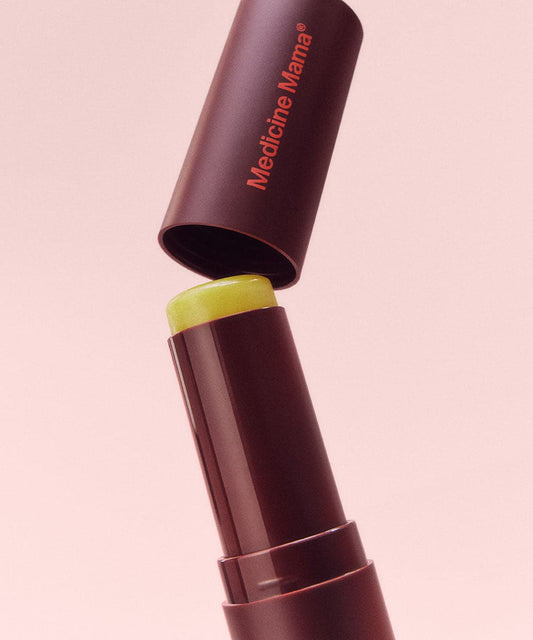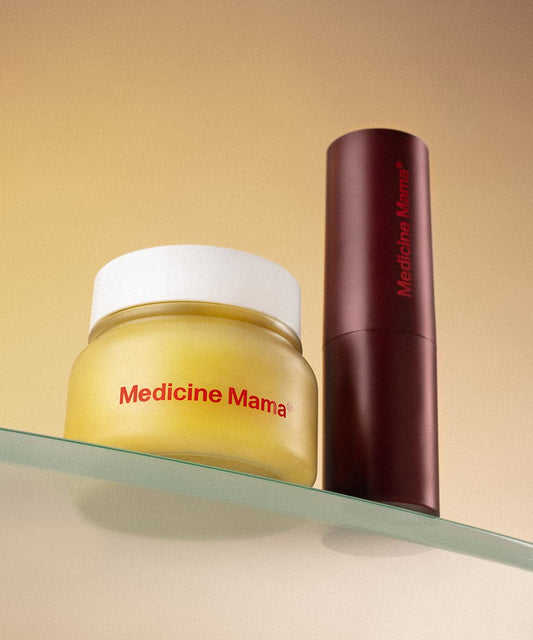Reviewed by | Dr. Clare Bertucio MD
Understanding your body is crucial for maintaining your health, especially when it comes to vaginal bumps. Many women worry about lumps in their vaginal area, but not all of these are cause for concern. Bumps, pimples, and skin-colored lesions can appear for various reasons, and many are entirely normal.
But because there’s a serious lack of conversation around things that affect your vulvar and vaginal health, it’s easy to become alarmed by something if it seems new or unusual to you. That’s why we’re here — to help break down these often-experienced but rarely-discussed concerns.
By understanding what's typical and what isn't, you can better manage your well-being and know when to seek medical attention and when you can relax.
Let’s Talk Vulvar Anatomy
It's essential to understand the basic anatomy of the genital area. The vulva includes the labia majora (outer lips), labia minora (inner lips), clitoris, and the vaginal opening. The labia majora and minora protect the vaginal opening and the internal genitalia, including the vagina, which is the canal leading to the cervix.
The vaginal wall is lined with mucous membranes that can also develop various types of bumps or lesions. These structures are susceptible to a range of conditions, from harmless Fordyce spots to more concerning signs of STIs like genital warts caused by the human papillomavirus (HPV).
Understanding these parts of your anatomy can help you recognize normal variations, such as skin-colored bumps or vaginal cysts, versus symptoms that might require an OB-GYN visit. By being familiar with the typical appearance and feel of your vulva and vagina, you can better detect any abnormalities and seek appropriate care.
What Are Normal Bumps?
Several types of bumps can appear in the vaginal area and are generally considered normal.
Fordyce Spots
Fordyce spots are small, skin-colored bumps often found on the labia. They are sebaceous glands and completely harmless. These spots are simply oil glands that can become more visible due to the thin skin in the vulvar area. While they might be mistaken for pimples or an STI, they are not linked to any disease or infection.
Vestibular Papillae
Vestibular papillae are small, finger-like projections around the vaginal opening that are often mistaken for genital warts. However, unlike genital warts caused by the human papillomavirus (HPV), vestibular papillae are entirely normal and harmless. They are typically uniform in size and color, whereas genital warts can vary significantly in appearance.
Vaginal Inclusion Cysts
Vaginal inclusion cysts are another type of benign bump that can form when vaginal skin becomes trapped under the surface. These cysts are generally small, painless, and don’t require treatment unless they cause discomfort. They can appear anywhere in the vaginal area, including the vaginal wall and around the vaginal opening.
Bartholin Cysts
Bartholin cysts occur when the Bartholin glands, located on either side of the vaginal opening, become blocked. These glands are responsible for secreting fluid that helps lubricate the vagina. When the duct of a Bartholin gland becomes obstructed, a fluid-filled cyst can form. These cysts are usually painless and may go unnoticed unless they become infected.
Skin Tags
Another normal occurrence is the presence of skin tags, which are small, benign growths that can appear on the labia majora or labia minora. These can be caused by friction, such as from tight clothing or shaving. Although they are harmless, they can be removed if they cause irritation or discomfort.
Ingrown Hairs
It’s also common to experience ingrown hairs in the genital area, especially if you shave or wax your pubic hair. These can appear as small, red bumps that may be tender to the touch. Proper hair removal techniques and exfoliation can help prevent ingrown hairs.
Understanding these normal types of vaginal bumps can help alleviate unnecessary worry and assist in recognizing when something might be amiss. That said, if you’re ever unsure about a bump or lump, it’s always a good idea to consult with a healthcare provider, such as an ob-gyn, to get accurate information and peace of mind.
When Should You Be Concerned?
While many bumps in the vaginal area are benign, there are times when you should definitely seek help from your doctor. For instance, genital warts caused by HPV are typically skin-colored or slightly darker and can appear in clusters.
These warts are a common sexually transmitted infection and should be evaluated by a healthcare provider. Treatment options can include topical creams, cryotherapy, or surgical removal.
Genital herpes, another common STI caused by the herpes simplex virus (HSV), can lead to painful blisters and sores. These blisters usually appear as clusters of red, fluid-filled lesions and can cause significant discomfort, especially during urination.
If you suspect you have genital herpes, it's crucial to see a healthcare provider for diagnosis and treatment, which often includes antiviral medications to manage outbreaks.
Molluscum contagiosum is a viral infection that causes small, firm, painless bumps with a central dimple. While this condition is generally harmless and resolves on its own, it is contagious through skin contact, so it's important to avoid sharing towels or engaging in sexual activity until the bumps are gone.
Bartholin cysts, which we discussed earlier, can become a concern if they become infected, leading to an abscess. Symptoms of an infected Bartholin cyst include severe pain, swelling, and difficulty walking or sitting. Treatment typically involves draining the abscess, sometimes followed by a course of antibiotics.
More serious conditions like vaginal cancer or vulvar cancer can also present as lumps, sores, or persistent itching. These cancers are rare but require immediate medical attention if suspected. Symptoms to watch for include changes in the color or texture of the skin, unusual bleeding, or persistent pain in the vulvar area.
It’s crucial to know when to seek professional help. Consult a healthcare provider if you experience persistent itching or pain, especially if accompanied by visible sores or blisters. Changes in color, consistency, or smell of discharge can indicate an infection you’ll want to treat as soon as possible, and any new or rapidly growing lumps should be evaluated.
What Can You Do for Your Vulva Skin?
If you had bumps or lumps on your face, you might look to address them with skincare. While you shouldn’t put any product inside of your vagina unless advised to do so by a doctor or gynecologist, you can address certain skin conditions or imperfections with vulvar skincare.
Some common causes of normal bumps around your vulva or bikini area are blocked hair follicles or folliculitis. Adding a vulva-friendly wash to your shower routine can help keep the area clean and hydrated, leading to a smoother, softer experience.
Use a gentle, fragrance-free vulva cleanser with safe and simple ingredients. These cleansers are designed to be safe for daily use and support the pH of your vulva, to ensure your skin isn’t holding onto any impurities that might create these vaginal lumps and bumps.
What About Hair Removal?
Hair removal around your vulva or bikini area may be the cause of your razor bumps or irritation. There are some simple self-care steps you can take to make sure your hair removal goes smoothly, whether you shave or wax.
Soften the hair and skin with warm water before shaving to reduce the risk of cuts and irritation, too. If your skin seems especially sensitive, you can even apply the same thought process and use a warm compress after shaving to help soothe skin and loosen up your follicles and pores.
After hair removal, you’ll want to avoid tight clothing that can irritate the skin and lead to ingrown hairs. Opt for breathable fabrics and keep the genital area dry to prevent bacterial growth. Wearing clothing or underwear that lets your most sensitive areas breathe can have the added bonus on cutting down instances of UTIs and other infections.
Own Your Body, Bumps and All
Understanding the differences between normal and abnormal vaginal bumps is crucial for maintaining your health. Regular self-examinations, proper hygiene, and safe grooming practices are key. If you notice anything unusual, don’t hesitate to seek advice from a healthcare provider.
By staying informed and using safe, effective products, you can take control of your vaginal well-being with confidence. Knowledge and proactive care are the keys to confidence and control over your wellness, no matter what comes your way.
Disclaimer: The information provided on this blog is for general informational and educational purposes only. All content, including text, images, graphics, and other material, is not intended to be a substitute for professional medical advice, diagnosis, or treatment.
Always seek the guidance of your physician or other qualified health professional with any questions you may have regarding a medical condition, treatment, or wellness program. Never disregard the advice of a medical professional or delay in seeking it because of something you have read on this website.
Sources:
Tight Pants and Pubic-Hair Removal Increase Risk of Vulvodynia | BU School of Health
Anatomy, Abdomen and Pelvis: Female External Genitalia | National Library of Medicine



